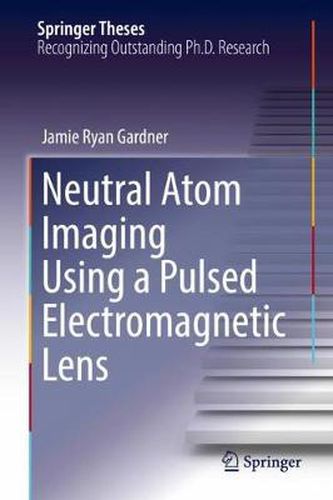Readings Newsletter
Become a Readings Member to make your shopping experience even easier.
Sign in or sign up for free!
You’re not far away from qualifying for FREE standard shipping within Australia
You’ve qualified for FREE standard shipping within Australia
The cart is loading…






This title is printed to order. This book may have been self-published. If so, we cannot guarantee the quality of the content. In the main most books will have gone through the editing process however some may not. We therefore suggest that you be aware of this before ordering this book. If in doubt check either the author or publisher’s details as we are unable to accept any returns unless they are faulty. Please contact us if you have any questions.
This book describes the design, construction, and characterization of a new type of aberration-corrected, neutral-atom lens. Atom beam control plays a crucial role in many different fields, ranging from fundamental physics research and materials science to applied nanotechnology. Despite this, atom-optical elements like lenses and mirrors remain relatively underdeveloped compared to their counterparts in other optics fields. Although aberration correction is addressed quite comprehensively in photon and electron lenses, no credible research efforts have yet produced the same technology for neutral atoms. It reports on progress towards a neutral atom imaging device that will be useful in a range of applications, including nanofabrication and surface microscopy. It presents a novel technique for improving refractive power and correcting chromatic aberration in atom lenses based on a fundamental paradigm shift from continuous, two-dimensional focusing to a pulsed, three-dimensional approach. Simulations of this system suggest that it will pave the way towards the long-sought goal of true atom imaging on the nanoscale. The book further describes the construction of a prototype lens, and shows that all of the technological requirements for the proposed system are easily satisfied. Using metastable neon from a supersonic source, the prototype was characterized for three different focal lengths and a diverse range of apertures. Despite some manufacturing imperfections, lower distortion and higher resolution than has been shown in any previous hexapole lens was observed. Comparison with simulations corroborates the underlying theory and encourages further refinement of the process.
$9.00 standard shipping within Australia
FREE standard shipping within Australia for orders over $100.00
Express & International shipping calculated at checkout
This title is printed to order. This book may have been self-published. If so, we cannot guarantee the quality of the content. In the main most books will have gone through the editing process however some may not. We therefore suggest that you be aware of this before ordering this book. If in doubt check either the author or publisher’s details as we are unable to accept any returns unless they are faulty. Please contact us if you have any questions.
This book describes the design, construction, and characterization of a new type of aberration-corrected, neutral-atom lens. Atom beam control plays a crucial role in many different fields, ranging from fundamental physics research and materials science to applied nanotechnology. Despite this, atom-optical elements like lenses and mirrors remain relatively underdeveloped compared to their counterparts in other optics fields. Although aberration correction is addressed quite comprehensively in photon and electron lenses, no credible research efforts have yet produced the same technology for neutral atoms. It reports on progress towards a neutral atom imaging device that will be useful in a range of applications, including nanofabrication and surface microscopy. It presents a novel technique for improving refractive power and correcting chromatic aberration in atom lenses based on a fundamental paradigm shift from continuous, two-dimensional focusing to a pulsed, three-dimensional approach. Simulations of this system suggest that it will pave the way towards the long-sought goal of true atom imaging on the nanoscale. The book further describes the construction of a prototype lens, and shows that all of the technological requirements for the proposed system are easily satisfied. Using metastable neon from a supersonic source, the prototype was characterized for three different focal lengths and a diverse range of apertures. Despite some manufacturing imperfections, lower distortion and higher resolution than has been shown in any previous hexapole lens was observed. Comparison with simulations corroborates the underlying theory and encourages further refinement of the process.